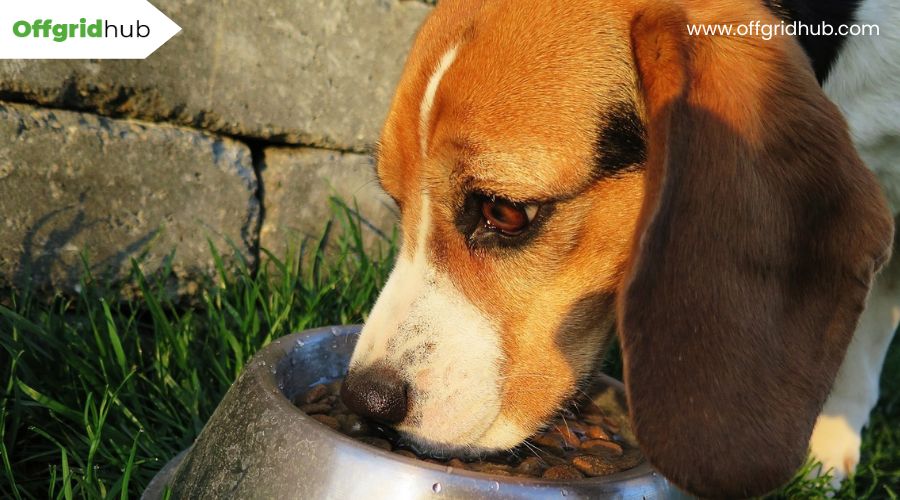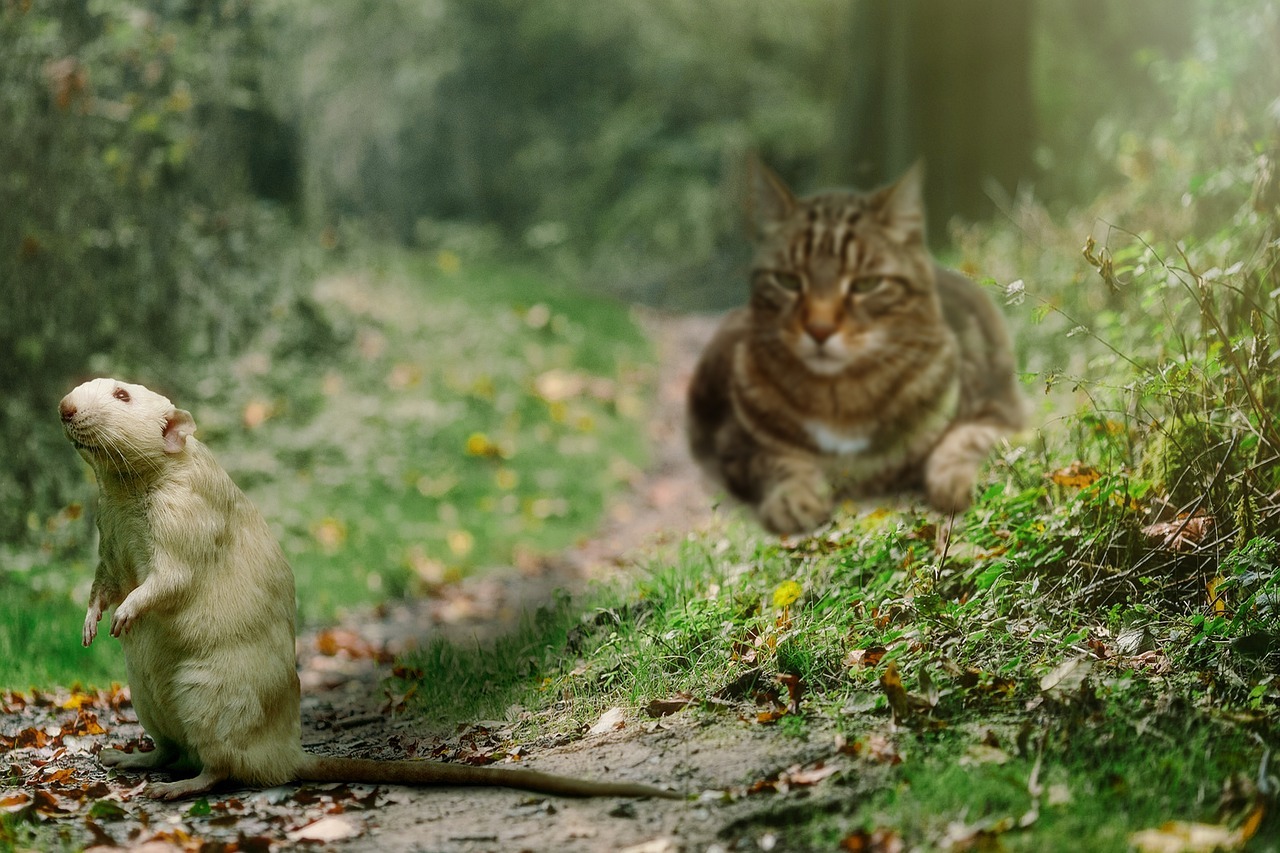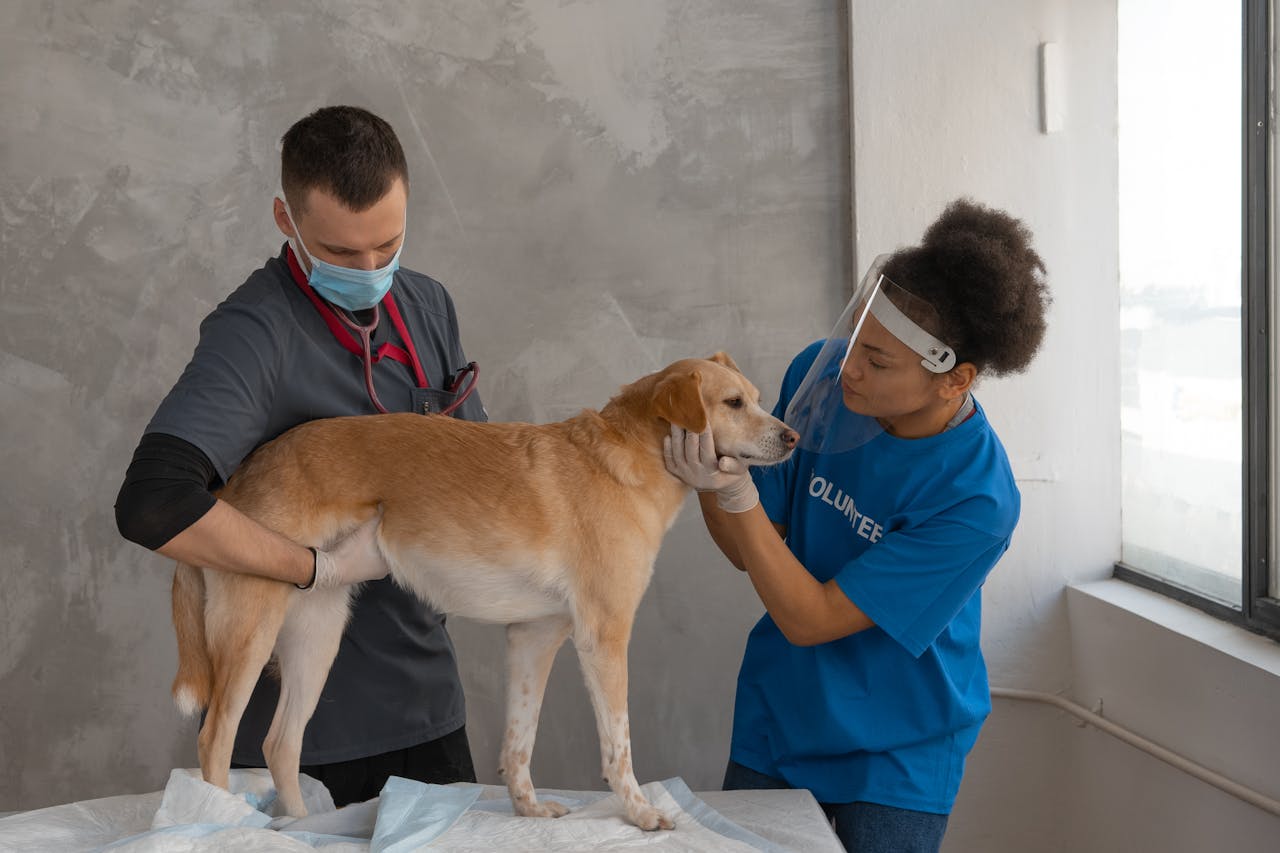Just as a gardener prepares the soil before planting seeds, you must lay the groundwork for feeding your pets in an off-grid environment. It’s crucial to assess their nutritional needs and utilize local resources effectively.
Whether it’s storing extra bags of pet food under the right conditions, opting for freeze-dried options, or supplementing with fresh meat and produce, you’ve got a variety of strategies at your fingertips. Creating a meal plan that incorporates safe food storage solutions and homemade recipes can significantly reduce waste and maintain your pet’s health.
Now, let’s explore how to turn these strategies into a sustainable routine for your furry friends, ensuring they thrive alongside you in any setting.
Assessing Nutritional Needs
To ensure your pets thrive off-grid, it’s crucial to understand their specific nutritional needs, which include a diet rich in meat-based proteins. Cats and dogs, your furry companions, need a substantial amount of these proteins to maintain their health. Cats, in particular, have a higher taurine requirement, an essential amino acid found in animal-based proteins, crucial for their survival and well-being.
You’ll find that a large part of meeting these needs involves providing the right kind of pet food. It’s not just about feeding them anything available; it’s about ensuring the food you provide meets their nutritional requirements. Dogs and cats need to consume about 2-5% of their body weight daily in food to stay at their optimal health. This means you’ll need to plan and possibly prepare meals that are rich in the nutrients they need.
Consider diversifying their diet with different protein sources, such as various salmon species, which can be an excellent addition to their pet food regime. Additionally, supplementing their diet with table scraps, offal, wild game, eggs, and dairy can provide extra nutrients they mightn’t get from commercial pet food alone. Understanding and fulfilling these dietary needs are paramount for their health off-grid.
Utilizing Local Resources
Leveraging local resources can significantly enhance your pets’ off-grid diet by providing fresh, nutrient-rich options. By sourcing fresh meat locally, you’ll ensure your cats get the essential taurine they need, making homemade cat food a viable, nutritious choice. Don’t overlook peanut butter and cheese from local producers as alternative feeding options, which can be especially handy for pets with specific dietary needs.
Consider the benefits of growing specific crops or allowing pets to free-range in designated areas. This approach not only supplements their diet with fresh fruits and veggies but also keeps them active and safe from predators. It’s a sustainable method to provide them with a variety of nutrients without relying solely on store-bought feeds.
Incorporate freeze-dried or dehydrated foods into your pets’ diets too. These can be prepared ahead of time and stored long-term, ensuring you always have a backup supply of nutritious food.
Lastly, utilize outdoor resources such as hunting or fishing. Providing your pets with natural food sources like large game or fish can significantly enrich their diet, fostering a healthier and more natural lifestyle for them off-grid.
Creating a Meal Plan
After exploring local resources for feeding pets off-grid, it’s crucial to focus on creating a meal plan that meets their nutritional demands. This plan should ensure your pets and livestock receive a balanced diet while you live sustainably. Here’s how you can effectively manage this:
- Calculate Daily Needs: Begin by calculating the daily food requirement for each pet based on their body weight and nutritional needs. This step is foundational to ensure that you’re preparing a meal plan that’s both sufficient and nutritionally balanced.
- Diversify Protein Sources: Include a variety of protein sources in your meal plan, such as fresh meat, eggs, or fish. This variety not only keeps your pets healthy but also makes feeding them more sustainable, especially if you can source these proteins from your own livestock or by fishing in nearby streams.
- Plan for Long-Term Storage: If you’re off-grid, consider how you’ll store food long-term. Options like freeze-dried, dehydrated, or canned foods can be viable. If you grow a garden or raise livestock, ensure your storage solutions, like a root cellar or solar-powered freezer, are large enough to handle the bounty.
Safe Food Storage Solutions
Ensuring your pets’ food remains fresh and nutritious while living off-grid requires implementing safe food storage solutions. Storing extra bags of pet food in ideal conditions is crucial. You can keep these bags fresh for up to six months, ensuring your pet’s meals maintain their nutritional value over time. For longer-term options, consider freeze-dried or dehydrated foods, as well as canned foods, which are excellent for maintaining freshness in an off-grid environment.
If commercial pet food becomes unavailable, don’t panic. Feeding your pets peanut butter or cheese can provide them with alternative nutrition sources temporarily. This approach ensures they’re still receiving essential nutrients until you can access their regular food again. Moreover, if you’re managing an off-grid lifestyle with outdoor cats, they can naturally help control the rat population, reducing the risk of these pests getting into your pet’s food supply.
Lastly, remember that cats require taurine for survival, found in fresh meat. This makes fresh meat a viable feeding option in an off-grid setting, ensuring your feline friends stay healthy and thrive, even away from conventional pet food sources.
Homemade Pet Food Recipes
While you’ve learned about keeping your pets fed and their food fresh off-grid, let’s explore how to create nutritious homemade meals for them. Making homemade pet food allows you to ensure your furry friends get balanced nutrition tailored to their specific needs. Here’s how you can incorporate key ingredients for a wholesome diet:
- Protein Sources: Use animal meat such as chicken, beef, or fish as the primary ingredient. These proteins are crucial for your pet’s muscle development and overall health.
- Grains for Carbohydrates: Add grains like rice or oats to your homemade pet food. They provide the necessary carbohydrates and fiber, aiding in your pet’s digestion.
- Vegetables: Integrate vegetables like carrots, peas, and sweet potatoes to supply vitamins and minerals. They enhance the meal’s nutritional value without adding empty calories.
Reducing Waste Efficiently
Turning your kitchen scraps into nutritious pet food not only reduces waste but also creates a sustainable feeding cycle in an off-grid living situation. By utilizing vegetable scraps and garden refuse, you’re making sure nothing goes to waste while providing essential nutrients to your pets. This approach not only requires less from your off-grid resources but also supports a greener lifestyle.
Incorporating spent brewers mash as feed for chickens and hogs can minimize waste and promote sustainability. This method ensures you’re able to grow a portion of your pet’s food, reducing reliance on store-bought options. Even though it might seem unconventional, these alternative feeds provide varied nutrition and help in reducing food waste efficiently.
Storing extra canned foods for pets can further reduce waste, ensuring a steady supply of nutrition. Additionally, consider feeding pets peanut butter or cheese as alternative options to diversify their diet and minimize waste. Diversifying feed sources for livestock with insects and invertebrates efficiently utilizes natural resources, making sure every bit of potential waste is turned into valuable nutrition for your off-grid pet family.
Monitoring Pet Health
Regularly monitoring your pets’ health through observation and veterinary visits is crucial for their well-being in an off-grid lifestyle. Being attentive to changes in their weight, coat condition, energy levels, and overall behavior can provide early signs of potential health issues. It’s essential to catch these signs early to maintain their health and happiness in a more isolated environment.
To ensure you’re on top of your pets’ health, consider these key points:
- Keep a Close Eye on Daily Habits: Monitor pets’ water intake, appetite, and bathroom habits. These everyday activities offer significant insights into their health. Changes might indicate dehydration, dietary issues, or other health problems.
- Schedule Regular Vet Visits: Even in an off-grid setting, making arrangements for regular veterinary check-ups is vital. These visits are crucial for addressing potential health concerns and keeping up with preventative care.
- Be Observant of Physical Changes: Watch for any changes in your pets’ eyes, ears, teeth, or skin, and monitor their mobility, breathing, and digestion. Addressing abnormalities promptly can prevent conditions from worsening.
Conclusion
In an off-grid environment, feeding your pets doesn’t have to be a challenge. By assessing their nutritional needs, utilizing local resources, and creating a balanced meal plan, you’re on the right track. Remember, safe food storage and homemade recipes can significantly contribute to their well-being. Don’t forget to reduce waste and monitor your pet’s health regularly.
With a bit of planning and creativity, you’ll ensure your furry friends are happy and healthy, even off the grid.


